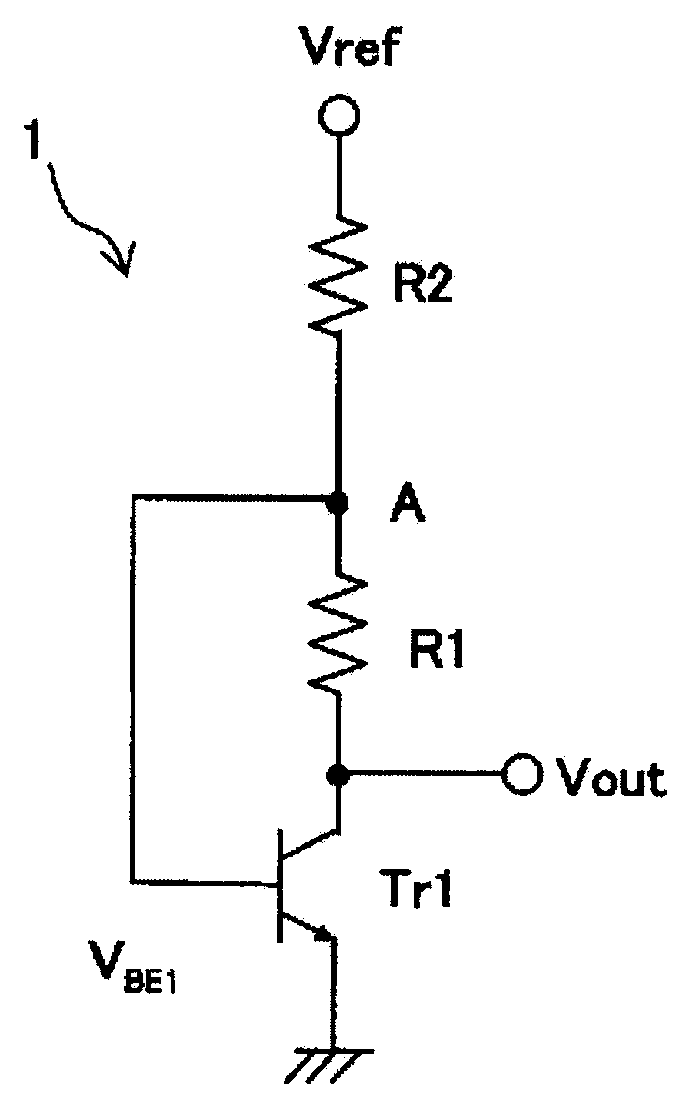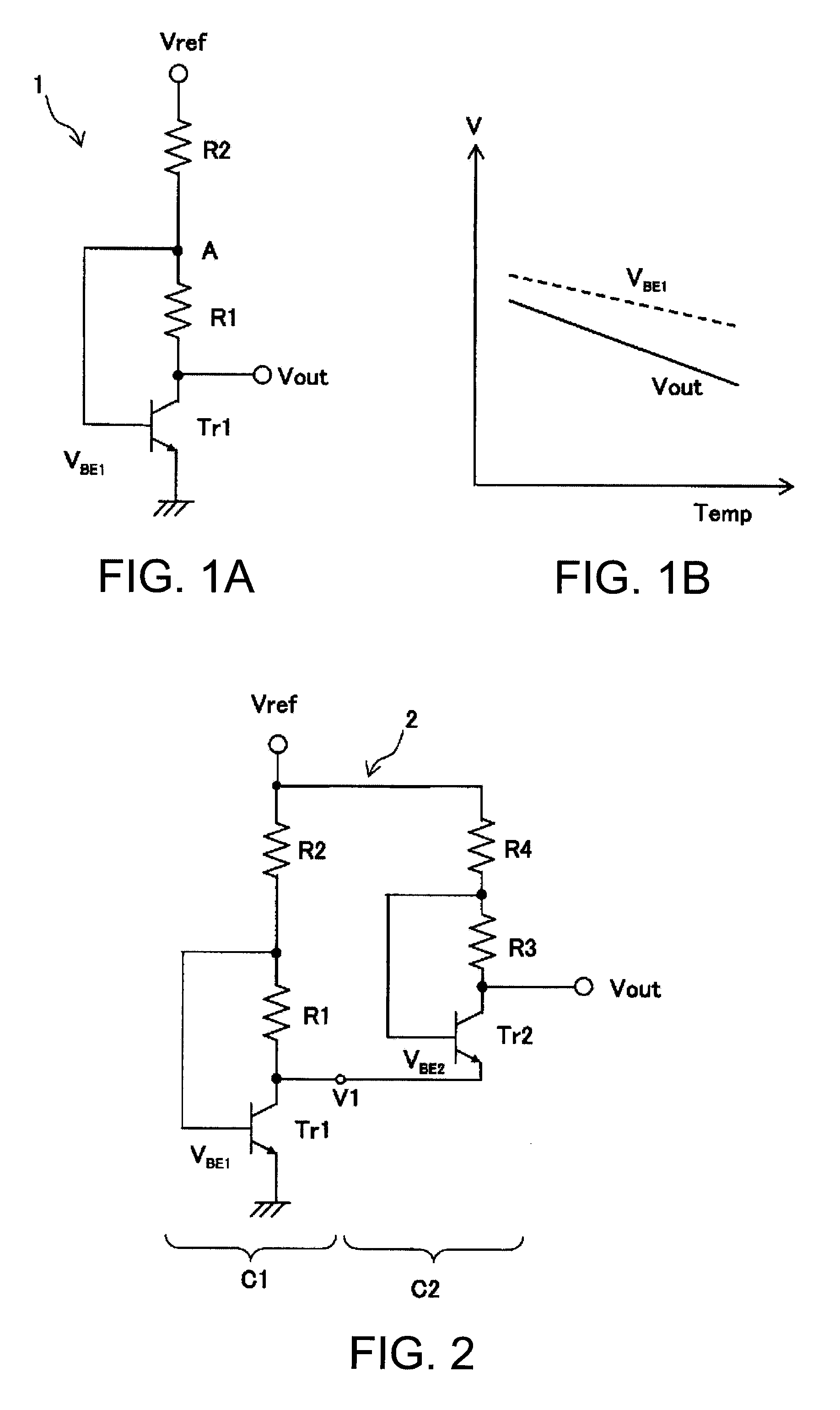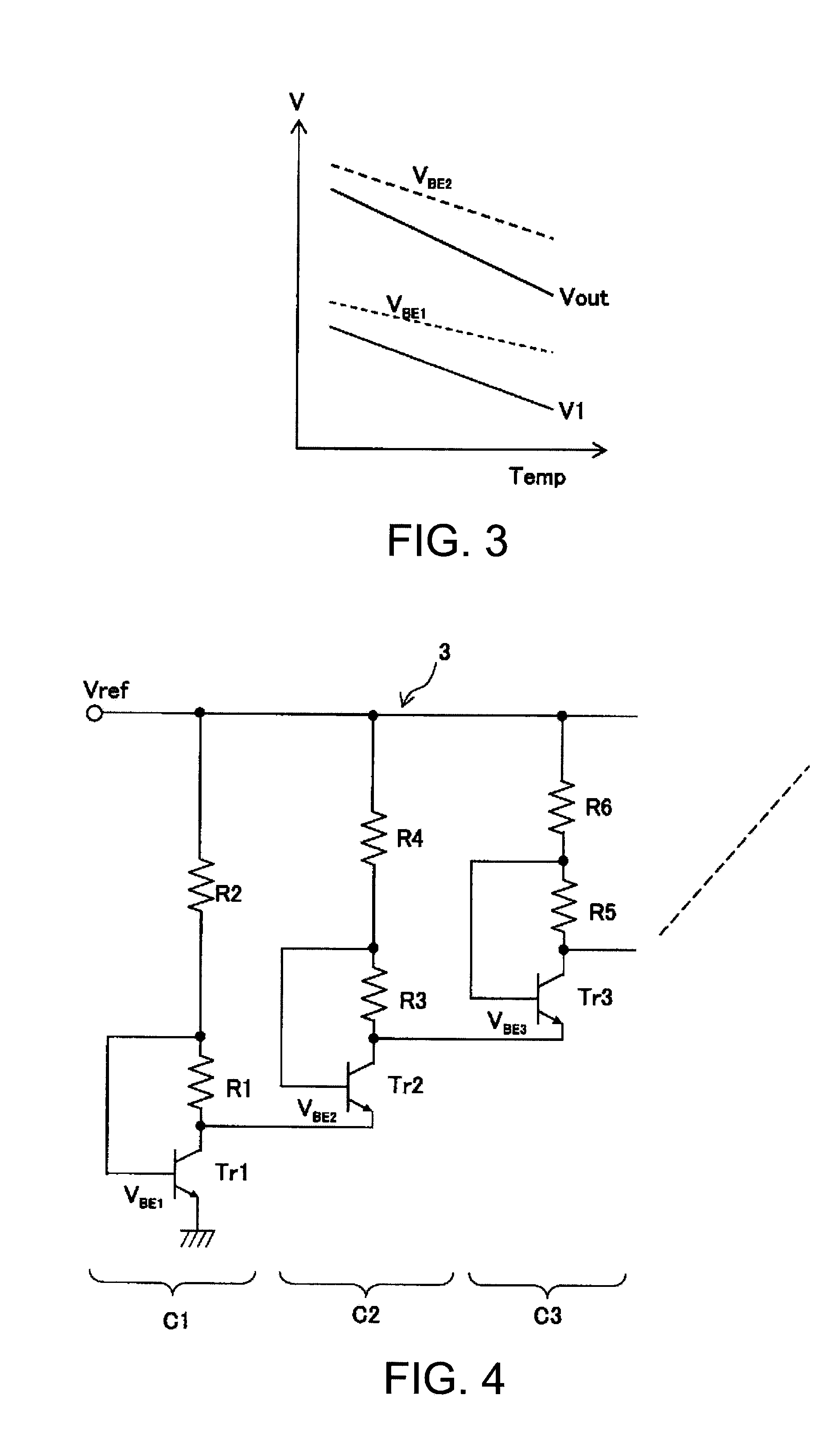Temperature-sensor circuit, and temperature compensated piezoelectric oscillator
a piezoelectric oscillator and temperature-compensated technology, applied in the field of temperature-sensor circuits and temperature-compensated piezoelectric oscillators, can solve the problems of unsatisfactory temperature sensor output, unfavorable linearity of output voltage with respect to temperature, and noise generating amplifiers affecting the output of temperature-compensated piezoelectric oscillators, etc., to achieve less noise, reduce voltage, and reduce the effect of nois
- Summary
- Abstract
- Description
- Claims
- Application Information
AI Technical Summary
Benefits of technology
Problems solved by technology
Method used
Image
Examples
first embodiment
[0036]FIG. 1A is a circuit diagram showing a configuration of a temperature sensor according to the invention.
[0037]A temperature-sensor circuit 1 shown in FIG. 1A includes a transistor Tr1 and a series circuit in which a resistor R1 serving as a first resistor and a resistor R2 serving as a second resistor are coupled in series. An end of the resistor R1 in the series circuit is coupled with a collector of the transistor Tr1 while an end of the resistor R2 in the series circuit is coupled with a reference supply (reference voltage Vref). Further, a base of the transistor Tr1 is coupled with a junction joining the resistor R1 and the resistor R2 while an emitter of the transistor Tr1 is grounded.
[0038]In FIG. 1B, a temperature characteristic of a base-emitter voltage VBE1 of the transistor Tr1 in the temperature-sensor circuit 1 shown in FIG. 1A is indicated in a dashed line, while an output voltage Vout is indicated in a full line. The output voltage Vout has a characteristic to de...
second embodiment
[0039]FIG. 2 is a circuit diagram showing a configuration of a temperature-sensor circuit according to a
[0040]A temperature-sensor circuit 2 includes a temperature sensor portion C1 and a temperature sensor portion C2. The temperature sensor portion C1 is configured similarly to the temperature-sensor circuit 1 shown in FIG. 1A. The temperature sensor portion C2 includes a transistor Tr2, and a series circuit including two resistors that are resistors R3 and R4. An end of the resistor R3 is coupled with a collector of the transistor Tr2, and the other end of the resistor R3 is coupled with a base, while an end of the resistor R4 is coupled with the other end of the resistor R3, and the other end of the resistor R4 is coupled with a reference supply (reference voltage Vref). Further, an output of the temperature sensor portion C1 is coupled with an emitter of the transistor Tr2 of the temperature sensor portion C2, so that an output is taken from the collector of the transistor Tr2.
[...
third embodiment
[0046]FIG. 4 is a circuit diagram showing a configuration of a temperature-sensor circuit according to a
[0047]A temperature-sensor circuit 3 shown in FIG. 4 includes a plurality of temperature sensor portions C1, C2, C3, . . . , that are coupled in a cascade.
[0048]In the third embodiment, the output (collector) of the temperature sensor portion C1 is coupled with the emitter in the temperature sensor portion C2 serving as a second temperature sensor portion, and further, the collector in the temperature sensor portion C2 is coupled with an emitter in the temperature sensor portion C3 serving as a third temperature sensor portion. Similarly, a collector of a transistor in a (i−1) th temperature sensor portion Ci−1(not illustrated) is sequentially coupled with an emitter of a transistor in a i-th temperature sensor portion Ci (not illustrated). Then, an output is taken from a collector of a transistor Trn (not illustrated) in a temperature sensor portion Cn (not illustrated) in a fina...
PUM
 Login to View More
Login to View More Abstract
Description
Claims
Application Information
 Login to View More
Login to View More - R&D
- Intellectual Property
- Life Sciences
- Materials
- Tech Scout
- Unparalleled Data Quality
- Higher Quality Content
- 60% Fewer Hallucinations
Browse by: Latest US Patents, China's latest patents, Technical Efficacy Thesaurus, Application Domain, Technology Topic, Popular Technical Reports.
© 2025 PatSnap. All rights reserved.Legal|Privacy policy|Modern Slavery Act Transparency Statement|Sitemap|About US| Contact US: help@patsnap.com



